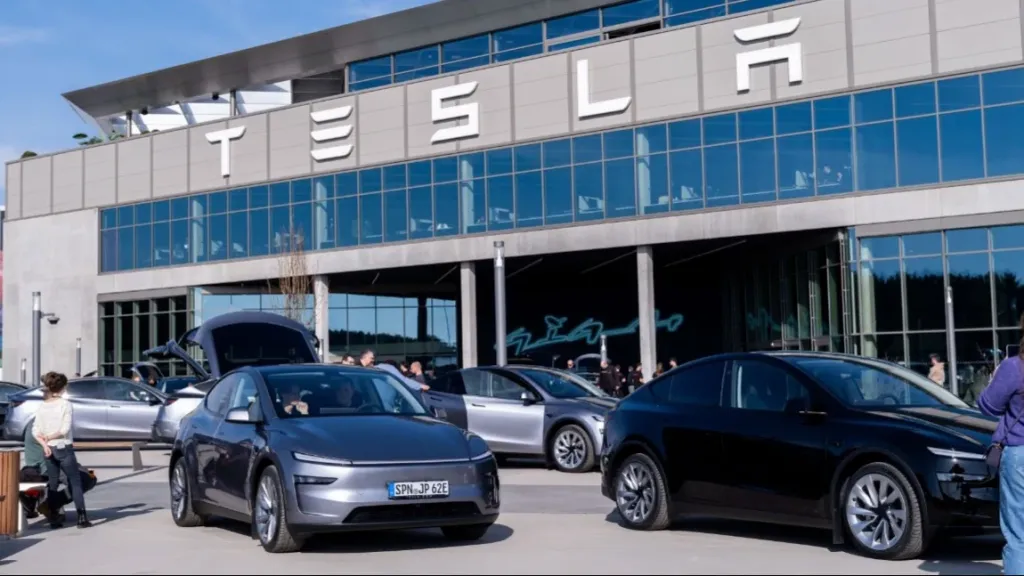Goldman names two advantages for Tesla over robotaxi startup. What remains unclear?

In anticipation of Tesla's robotaxi launch, a Goldman Sachs analyst pointed to two positive factors that could help the company become the leader of the race in the autonomous driving market. However, he also expressed skepticism about Tesla CEO Ilon Musk's overly optimistic predictions about scaling the business. Investors are keeping a close eye on the upcoming launch and have high hopes for it, but Barron's also highlighted a few key points that should not be overlooked. What should a trader look out for ahead of the event that could support Tesla quotes, which have been struggling lately?
Reasons for optimism
Ahead of Tesla's robotaxi launch in Austin, which is expected as early as June, Goldman Sachshas highlighted two key advantages for the company in the race for leadership in autonomous driving. The first is the scale of its existing business and unique engineering solutions: the company uses its own chips and dispenses with lidar and radar, making it cheaper to manufacture than competitors. The second is the company's proprietary "end-to-end" approach to AI training: Tesla creates adaptive software capable of navigating new conditions through reasoning rather than pre-defined algorithms, which makes the technology easier to scale.
Which is still in question
Along with optimism, the Goldman Sachs analyst also expressed doubts that Tesla will be able to achieve its aggressive goals in autonomous transportation. For example, the company plans to expand beyond Austin by the end of the year, and by the end of 2026, Muskexpects to see hundreds of thousands of unmanned cabs on the road. At the same time, he predicts that the estimated operating costs of scaling will be in the ballpark of 40 cents per mile. Goldman Sachs takes a more restrained view of the situation. According to their calculations, the average cost of depreciation, insurance and remote control for robotaxis is now $1.34 per mile, and it will not be possible to reduce this price to 40 cents until 2040. The bank also believes Tesla will only be able to launch about 2,500 robotaxis by 2027. Earlier in June, Goldman Sachs lowered its target on Tesla shares - from $295 to $285 (12% below the June 11 close) - and reiterated a neutral rating, which is equivalent to a "hold" recommendation.
Goldman isn't the only one who thinks Tesla's targets are overstated. On Monday, Baird analyst Ben Kallo downgraded Tesla's stock from Outperform ("above market," meaning buy) to Neutral for the first time in three years. However, he left the stock's target price unchanged at $320, up about 2% from the close on June 11. "We believe Musk's statements about the pace of robotaxi launches are overly optimistic, and that enthusiasm is already built into the stock price," the analyst wrote. Baird is also concerned about the elimination of incentives for the purchase of electric cars, which is included in Trump's budget bill, which became the reason for his conflict with Musk. The analyst also pointed to increased competition in the electric car market and the high cost of the company;
Beyond that, Barron's also has highlighted a few important questions investors should pay attention to that remain unanswered for now. The first is how many cars will be involved in the startup. The second is how the system will be monitored. The third is what the Tesla app for calling cabs will look like. And finally, the fourth is whether the robotaxi will be available to everyone or only to invitees at first. Musk has previously said that the launch could go ahead with a minimum of 10 cars, and that traffic would be monitored by remote operators to ensure safety. There is also speculation among investors that the first users will be selected by invitation, emphasizes Barron's.
Context
Investors have high hopes for the success of Tesla's robotaxi service: they expect it to become a new growth driver for the company, Investopedia notes. Musk has been claiming for more than a year that Tesla's core business is not electric cars, but AI and robotics. In 2023, the company began production of its own supercomputer Dojo, and in 2024 prioritized the development of robotaxis, postponing the release of the budget model Tesla with manual control.
Recently, the company's quotations have come under pressure. Falling sales of Tesla against the background of Musk's political activity in the White House, increased competition, the threat of the abolition of tax benefits and trade duties - all this has negatively affected the dynamics of Tesla shares. Thus, since the beginning of the year they have sagged by almost 20%, while the U.S. broad market index S&P 500, on the contrary, rose by about 2.5%. Over the past month, three analysts have given up their advice to buy Tesla shares, while three more analysts have given neutral ratings, MarketWatch shows. Now the company's securities have 26 buy (Buy and Overweight), 18 neutral and 11 recommendations for investors to get rid of them in the portfolio.
